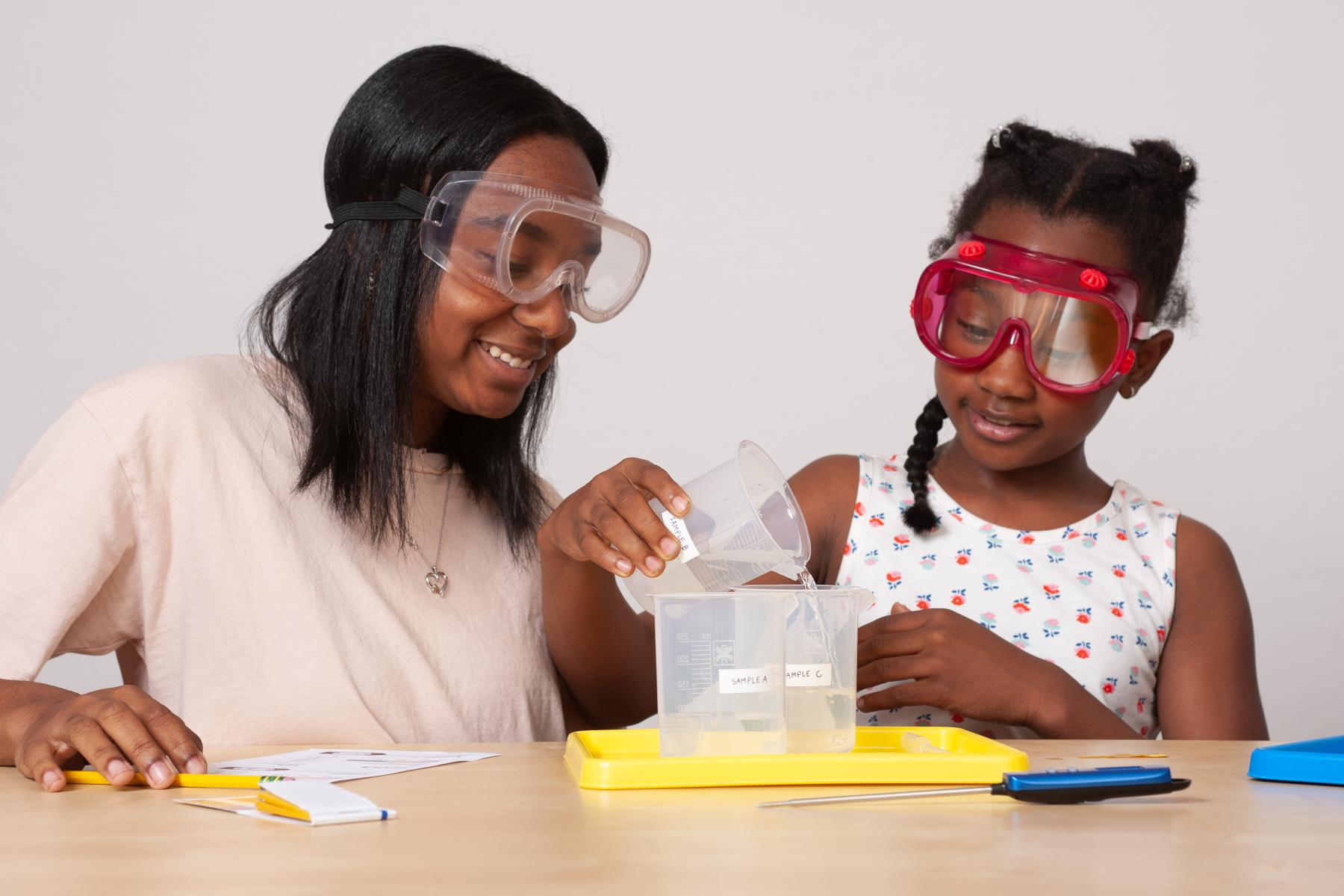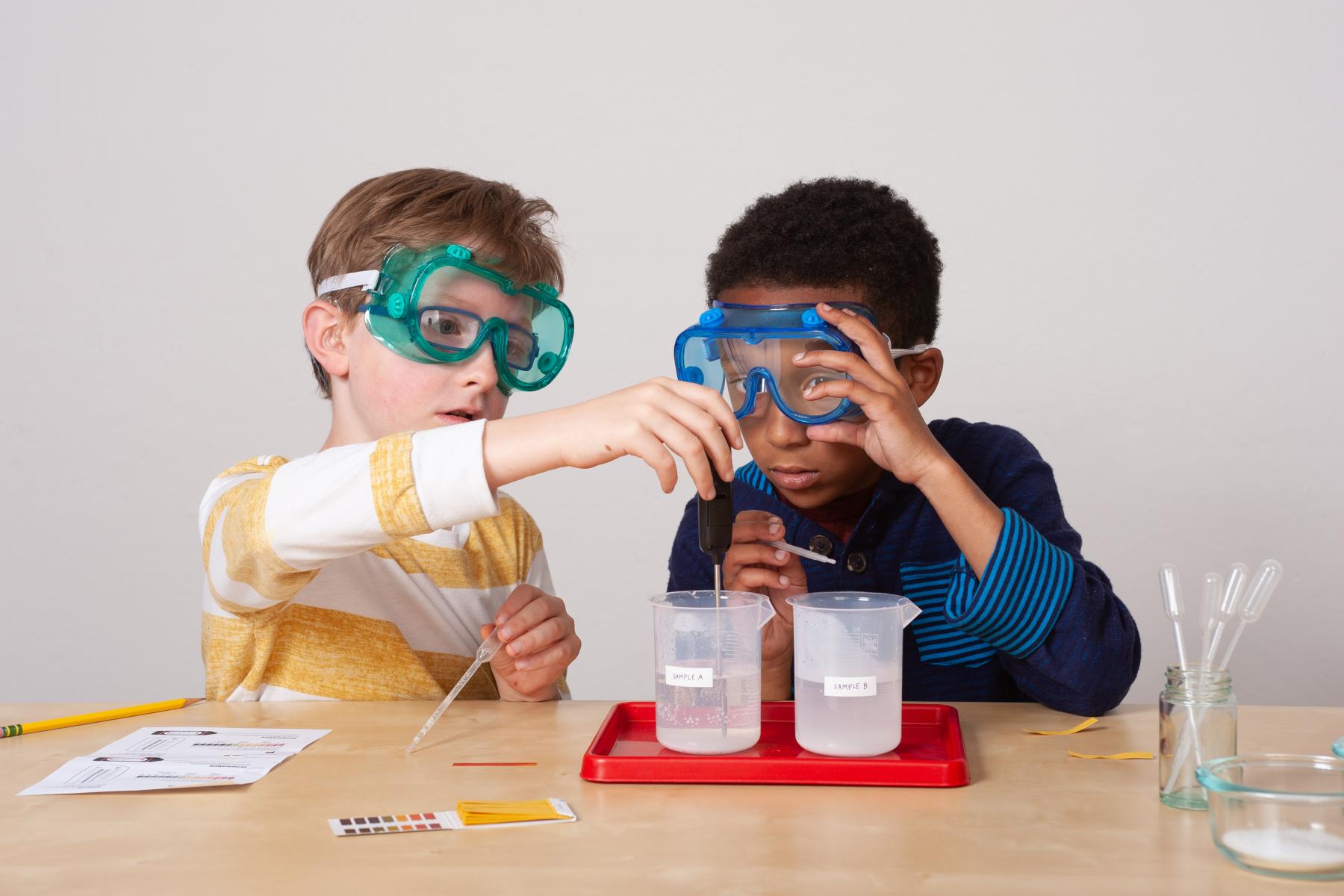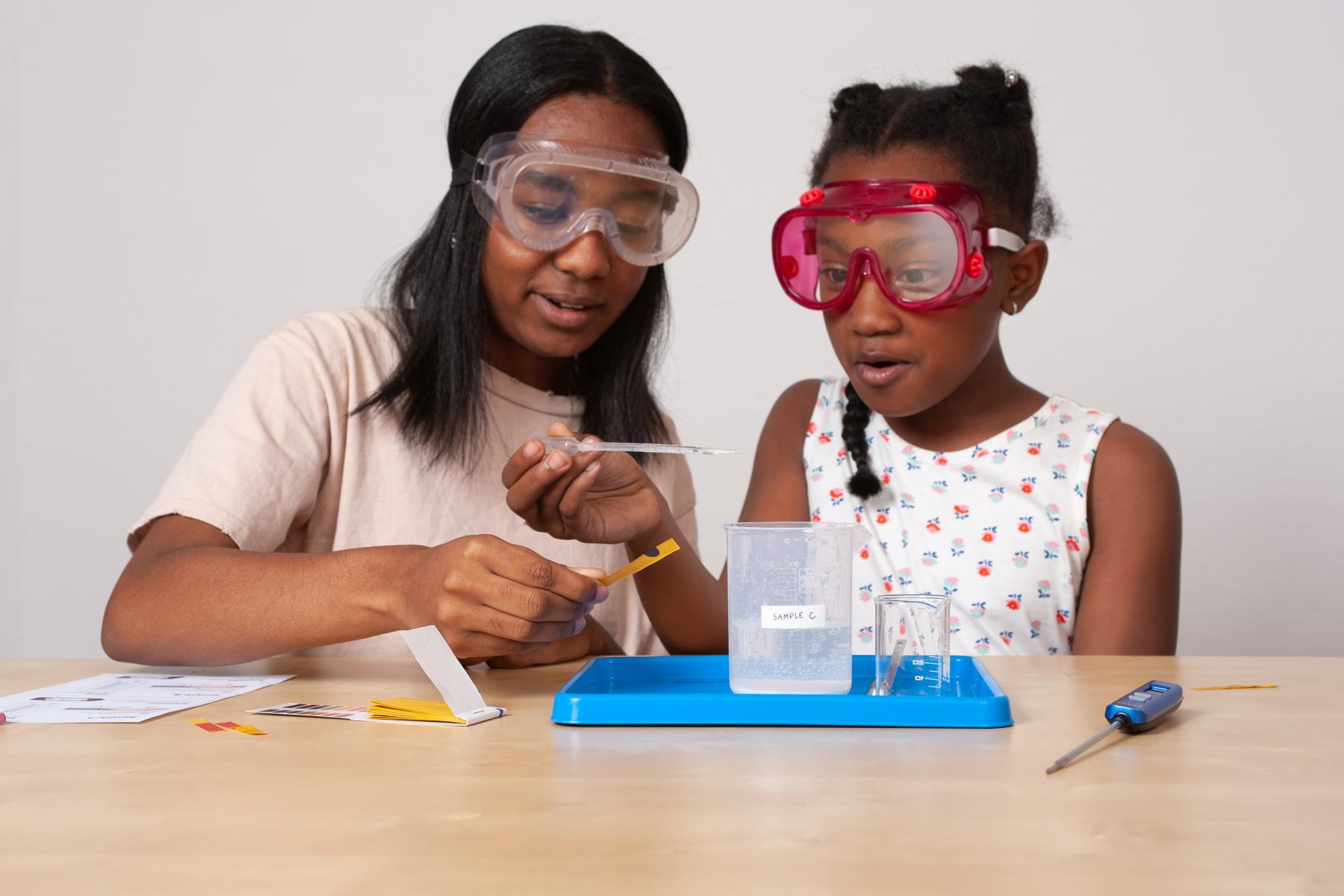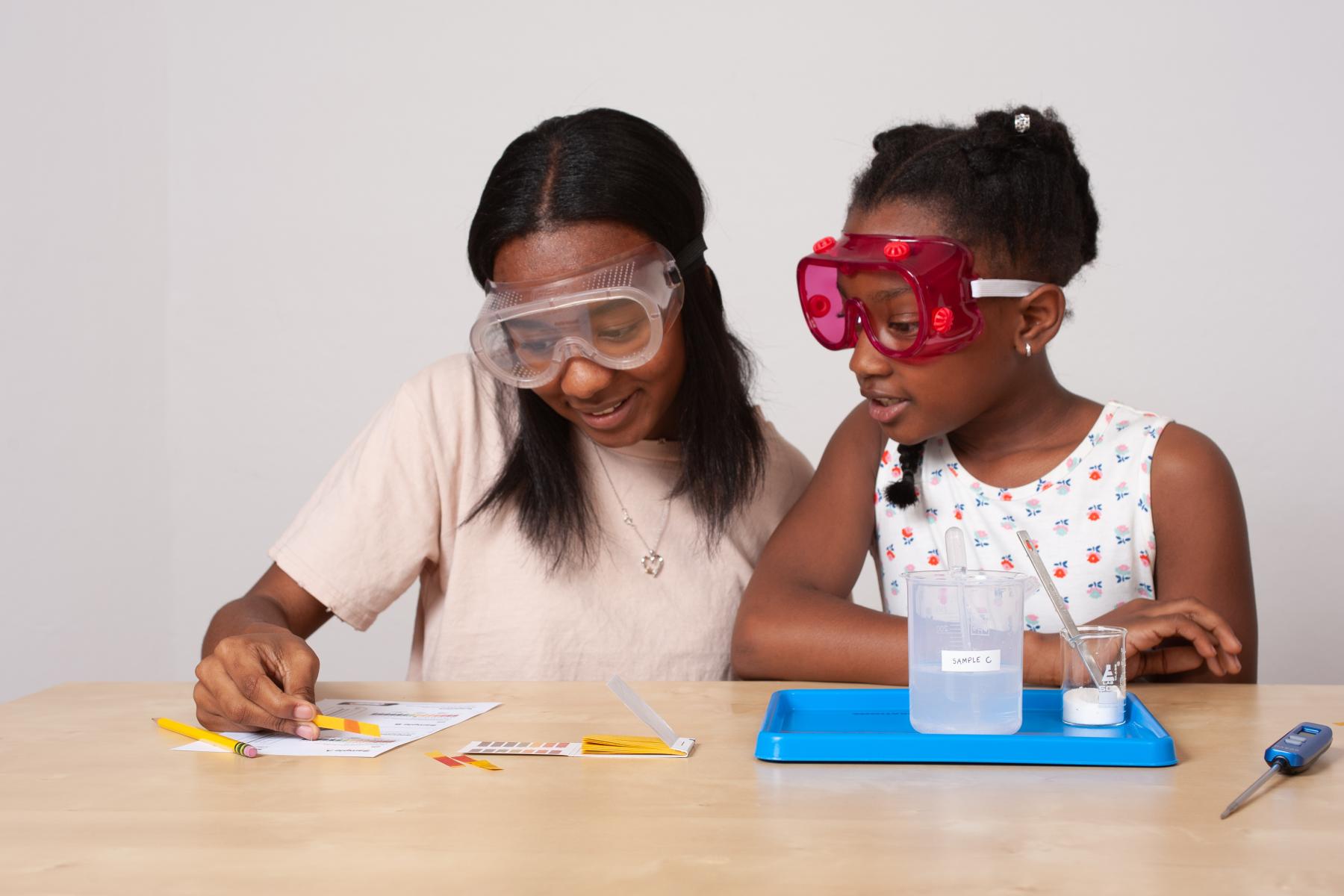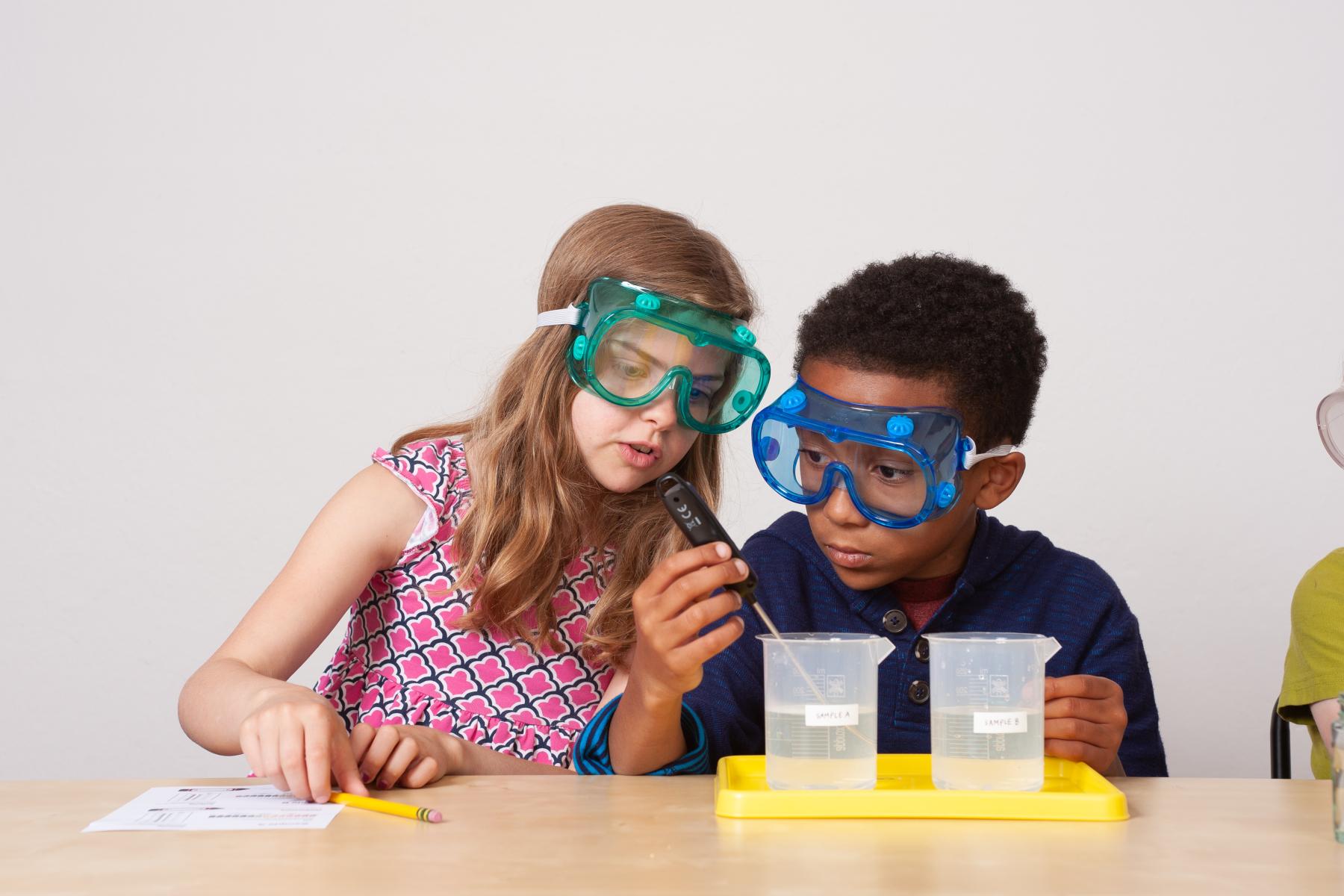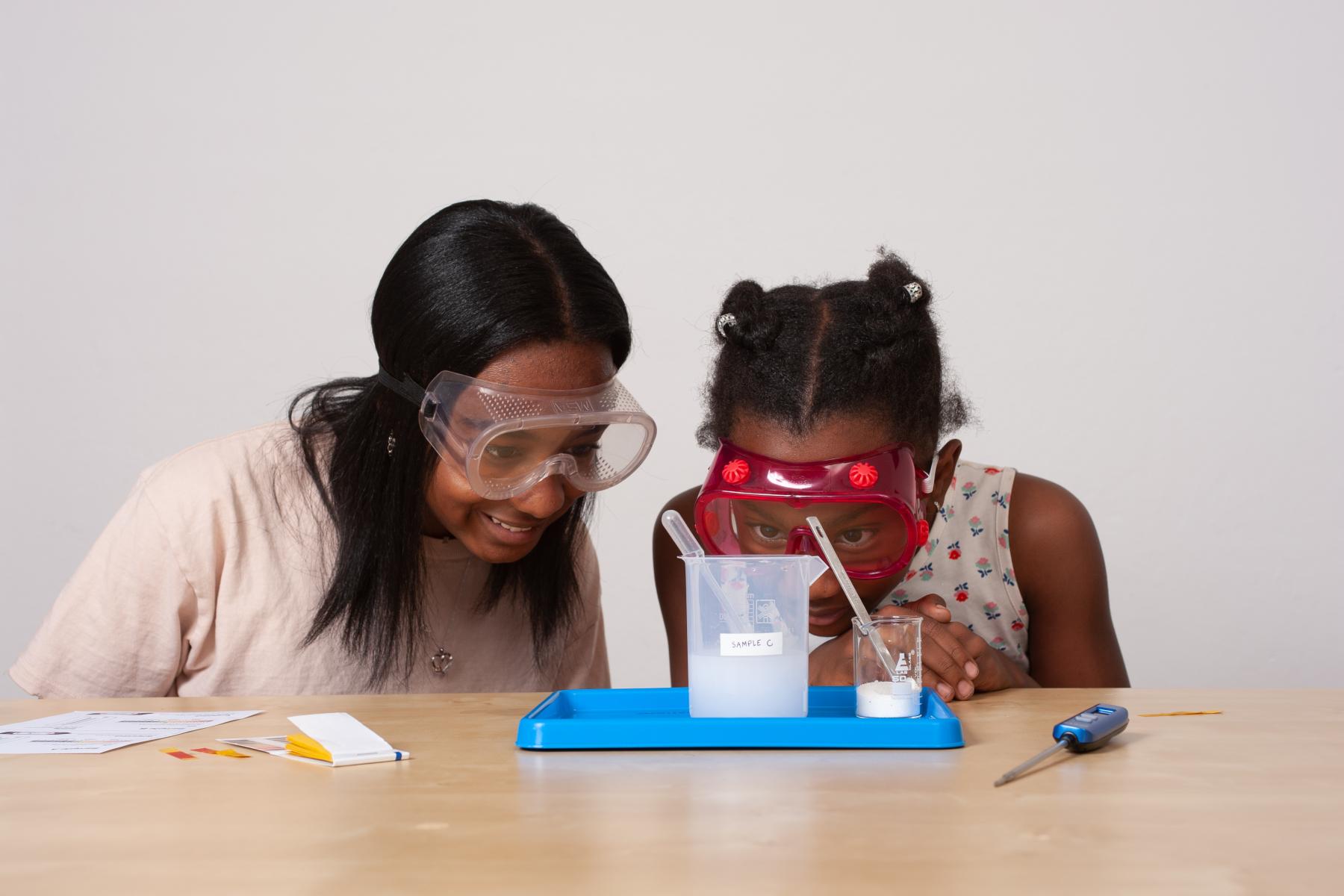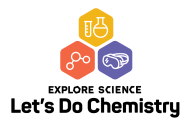DESCRIPTION
"What's in the Water" lets participants use tools to solve a mystery: what chemicals and compounds are in a sample of water. By investigating with a variety of tools and techniques learners understand how chemistry can help us explore, understand, and solve problems.
DESCRIPTION
"What's in the Water" lets participants use tools to solve a mystery: what chemicals and compounds are in a sample of water. By investigating with a variety of tools and techniques learners understand how chemistry can help us explore, understand, and solve problems.
TRAINING VIDEOS
OBJECTIVES
BIG IDEA
Chemists use tools understand our world—and how we change it.
Chemistry can help us explore, understand, and solve problems.
LEARNING GOALS
Learners will develop positive attitudes toward chemistry:
- Learners will increase their understanding of the relevance of chemistry by exploring the applications of chemistry and connections to everyday life.
- Learners will increase their sense of self-efficacy related to chemistry through hands-on interaction with scientific tools and by experimenting with variables.
DOWNLOAD FILES
- What's in the Water activity sign (PDF)
- What's in the Water test sheet (PDF)
- What's in the Water activity guide (PDF)
- Citric acid Safety Data Sheet (PDF)
- Sodium chloride Safety Data Sheet (PDF)
- Facilitator Guide With Updated Credits (PDF)
- What's in the Water activity guide (Spanish) (PDF)
- What's in the Water test sheet (Spanish) (PDF)
- What's in the Water activity sign (Spanish) (PDF)
Credits
Developed for the NISE Network with funding from the National Science Foundation under Award Numbers 0532536 and 0940143. Any opinions, findings, and conclusions or recommendations expDeveloped for the NISE Network with funding from the National Science Foundation under Grant Number DRL 1612482. Any opinions, findings, and conclusions or recommendations expressed in this material are those of the author(s) and do not necessarily reflect the view of the National Science Foundation. Any opinions, findings, and conclusions or recommendations expressed in this product are those of the authors and do not necessarily reflect the views of the Foundation.ressed in this product are those of the authors and do not necessarily reflect the views of the Foundation.
Creative Commons Attribution Non-Commercial Share Alike 3.0 United States (CC BY-NC-SA 3.0 US).
View more details

NISE Network products are developed through an iterative collaborative process that includes scientific review, peer review, and visitor evaluation in accordance with an inclusive audiences approach. Products are designed to be easily edited and adapted for different audiences under a Creative Commons Attribution Non-Commercial Share Alike license. To learn more, visit our Development Process page.

